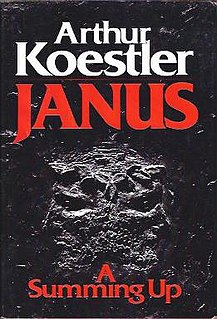Related Research Articles
A hierarchy is an arrangement of items that are represented as being "above", "below", or "at the same level as" one another. Hierarchy is an important concept in a wide variety of fields, such as architecture, philosophy, design, mathematics, computer science, organizational theory, systems theory, systematic biology, and the social sciences.
Systems theory is the interdisciplinary study of systems, i.e. cohesive groups of interrelated, interdependent components that can be natural or human-made. Every system has causal boundaries, is influenced by its context, defined by its structure, function and role, and expressed through its relations with other systems. A system is "more than the sum of its parts" by expressing synergy or emergent behavior.
Software design is the process by which an agent creates a specification of a software artifact intended to accomplish goals, using a set of primitive components and subject to constraints. Software design may refer to either "all the activity involved in conceptualizing, framing, implementing, commissioning, and ultimately modifying complex systems" or "the activity following requirements specification and before programming, as ... [in] a stylized software engineering process."

A holon is something that is simultaneously a whole in and of itself, as well as a part of a larger whole. In other words, holons can be understood as the constituent part–wholes of a hierarchy.
In logic, philosophy and related fields, mereology is the study of parts and the wholes they form. Whereas set theory is founded on the membership relation between a set and its elements, mereology emphasizes the meronomic relation between entities, which—from a set-theoretic perspective—is closer to the concept of inclusion between sets.
Broadly speaking, modularity is the degree to which a system's components may be separated and recombined, often with the benefit of flexibility and variety in use. The concept of modularity is used primarily to reduce complexity by breaking a system into varying degrees of interdependence and independence across and "hide the complexity of each part behind an abstraction and interface". However, the concept of modularity can be extended to multiple disciplines, each with their own nuances. Despite these nuances, consistent themes concerning modular systems can be identified.
Modular programming is a software design technique that emphasizes separating the functionality of a program into independent, interchangeable modules, such that each contains everything necessary to execute only one aspect of the desired functionality.

Janus: A Summing Up is a 1978 book by Arthur Koestler, in which the author develops his philosophical idea of the holarchy. First introduced in Koestler's 1967 book, The Ghost in the Machine, the holarchy provides a coherent way of organizing knowledge and nature all together. The idea of the holarchy is that everything we can think of is composed of holons, so that each holon is always a constituent of a larger one and yet also contains other holons that are constituents of a lower level system within. Every holon is like a two-faced Janus, the Roman god: one side looks down ; the other side looks up. Each whole is a part of something greater, and each part is in turn an organizing whole to the elements that constitute it. Koestler believed that everything in a healthy system is organized this way, from the human body, to chemistry to the history of philosophy.

A bill of materials or product structure is a list of the raw materials, sub-assemblies, intermediate assemblies, sub-components, parts, and the quantities of each needed to manufacture an end product. A BOM may be used for communication between manufacturing partners or confined to a single manufacturing plant. A bill of materials is often tied to a production order whose issuance may generate reservations for components in the bill of materials that are in stock and requisitions for components that are not in stock. There are two types of bill materials.
A heterarchy is a system of organization where the elements of the organization are unranked (non-hierarchical) or where they possess the potential to be ranked a number of different ways. Definitions of the term vary among the disciplines: in social and information sciences, heterarchies are networks of elements in which each element shares the same "horizontal" position of power and authority, each playing a theoretically equal role. In biological taxonomy, however, the requisite features of heterarchy involve, for example, a species sharing, with a species in a different family, a common ancestor which it does not share with members of its own family. This is theoretically possible under principles of "horizontal gene transfer".
Holism in science, holistic science, or methodological holism is an approach to research that emphasizes the study of complex systems. Systems are approached as coherent wholes whose component parts are best understood in context and in relation to both each other and to the whole. Holism typically stands in contrast with reductionism, which describes systems by dividing them into smaller components in order to understand them through their elemental properties.

The Ghost in the Machine is a 1967 book about philosophical psychology by Arthur Koestler. The title is a phrase coined by the Oxford philosopher Gilbert Ryle to describe the Cartesian dualist account of the mind–body relationship. Koestler shares with Ryle the view that the mind of a person is not an independent non-material entity, temporarily inhabiting and governing the body. The work attempts to explain humanity's self-destructive tendency in terms of individual and collective functioning, philosophy, and overarching, cyclical political–historical dynamics, peaking in the nuclear weapons arena.
Modular design, or modularity in design, is a design principle that subdivides a system into smaller parts called modules, which can be independently created, modified, replaced, or exchanged with other modules or between different systems.
A glossary of terms relating to systems theory.
MIBE architecture is a behavior-based robot architecture developed at Artificial Intelligence and Robotics Lab of Politecnico di Milano by Fabio La Daga and Andrea Bonarini in 1998. MIBE architecture is based on the idea of animat and derived from subsumption architecture, formerly developed by Rodney Brooks and colleagues at MIT in 1986.
UML state machine, also known as UML statechart, is an extension of the mathematical concept of a finite automaton in computer science applications as expressed in the Unified Modeling Language (UML) notation.
Integral theory is a synthetic metatheory developed by Ken Wilber. It attempts to place a wide diversity of theories and models into one single framework. The basis is a "spectrum of consciousness," from archaic consciousness to ultimate spirit, presented as a developmental model. This model is based on development stages as described in structural developmental stage theories; various psychic and supernatural experiences; and models of spiritual development. In Wilber's later framework, the AQAL model, it is extended with a grid with four quadrants, synthesizing various theories and models of individual psychological and spiritual development, of collective mutations of consciousness, and of levels or holons of neurological functioning and societal organisation, in a metatheory in which all academic disciplines and every form of knowledge and experience are supposed to fit together.
Holacracy is a method of decentralized management and organizational governance, which claims to distribute authority and decision-making through a holarchy of self-organizing teams rather than being vested in a management hierarchy. Holacracy has been adopted by for-profit and non-profit organizations in several countries. This can be seen as a greater movement within organisational design to cope with increasing complex social environments, that promises a greater degree of transparency, effectiveness and agility.
PROSE was the mathematical 4GL virtual machine that established the holistic modeling paradigm known as Synthetic Calculus. A successor to the SLANG/CUE simulation and optimization language developed at TRW Systems, it was introduced in 1974 on Control Data supercomputers. It was the first commercial language to employ automatic differentiation (AD), which was optimized to loop in the instruction-stack of the CDC 6600 CPU.
The SARL programming language is a modular agent-oriented programming language. It aims at providing the fundamental abstractions for dealing with concurrency, distribution, interaction, decentralization, reactivity, autonomy and dynamic reconfiguration.
References
- ↑ Funch, Fleming (February 4, 1995). "Holarchies". World Transformation.
- ↑ Spangler, David (October 30, 2008). "A Vision of Holarchy". Seven Pillars Review. Archived from the original on 2012-02-18. Retrieved 2015-04-29.